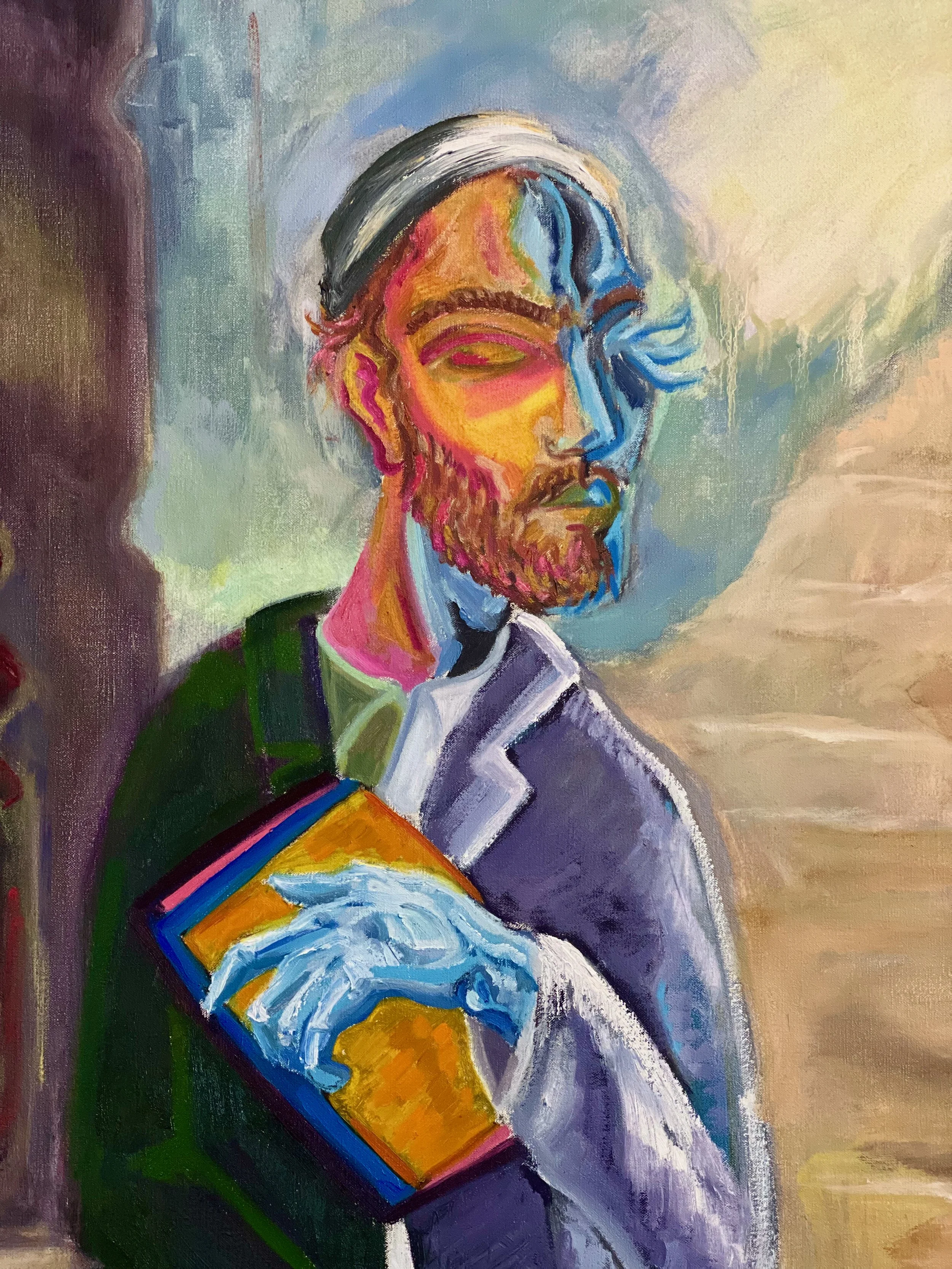Artist Statement, 2022
“The religious artist” is usually thought to be retrograde, subordinating himself to traditional institutions — and not readily seen as a part of contemporary art. Specifically, today’s figurative painting often emphasizes the importance of identity. And, this is for good reason! In a figurative work of art the “people” who populate the canvases are projections of the artist’s psychological orientation. In other words: the artist can’t get outside of themselves! The painting is an extension of the total self of the artist.
All that is just to say: amongst the complex array of identity being expressed today, I have journeyed to the core of my self and want to be that person publicly, and express that fully in my paintings.
I am a jewish man and an artist. I have made the decision that being an authentic artist, whose work is impactful requires being fully myself: my Jewishness is essential to that project.
Understanding a bit about the history of Jews in the West may bring audiences greater appreciation of what this means for me to say. The People of Israel are referred to as the Chosen People in the Bible. While in Diaspora and throughout European history, my people were often excluded or removed themselves from the surrounding culture, remaining, to an extent, secretive, different.
Being Chosen brings about an unusual amount of attention – often inflaming hatred. As a Jewish artist, I am looking for attention. Owning my Jewishness puts me in a position of receiving not just hatred, but dealing with the wider realities of controversy and conflict.
The choice of many jews, especially in America, is to shy away from this predicament by assimilating. We become “white men” and respond to the world with a plethora of invented ideologies, rather than developing the tradition of our ancestors; We apply our intellect and imagination, aesthetic capacities to a range of other cultures and schools of thought – as we should; But we ignore and obfuscate our own culture and tradition.
Being a jew but not being jewish — this is a problem I’ve experienced.
Having grown up a secular jew on the East Coast of America, this self-denial was my basic orientation. I saw Boticcelli’s “Venus” without having heard of the matriarchs Sarah, Rebecca, Rachel and Leah. I saw Tupac, Bono and Justin Timberlake on MTV, never knowing the story of the Prophet Samuel, King David or Rabbi Akiva.
My religious awakening was brought about through a commitment to the methods of Swiss-German psychologist C.G. Jung, who applies a subtle and patient approach to the analysis of dreams in order to connect to Soul. The revelation of my Jewish Soul brought about a sense of responsibility to my ancestors and our traditions, rather than to political ideology, or other mass movements of the day.
As an artist, I seek to portray ethnic nuances with sensitivity, compassion and the emphasis of respectful appreciation. My work strives for unity among differences. This is because, although I value jewish specificity today, I choose not to deny my past – as those early impressions inform who I am today. To me, a jewish artist knows himself, but doesn’t exclude other influences.
I am driven by an instinct to create a meaningful vision of unity. My art is an emergent, creative and unique artistic-religious calling, as well as a social-psychological contribution. My work is driven by a desire to bring about betterment on a grand scale, one canvas at a time.

